
Jay Hovdey’s unmissable series continues with the Hall of Fame sprint filly forever remembered as the nemesis of Dayjur at a notorious Breeders’ Cup at Belmont Park
 Of the many vivid memories supplied by the lightning-quick, leather-tough filly Safely Kept, none meant more to Barry Weisbord, one of her lucky owners, than the day his father, Norman Weisbord, arrived at the hospital bed of his son bearing an imposing silver trophy.
Of the many vivid memories supplied by the lightning-quick, leather-tough filly Safely Kept, none meant more to Barry Weisbord, one of her lucky owners, than the day his father, Norman Weisbord, arrived at the hospital bed of his son bearing an imposing silver trophy.
At the time, Weisbord was in recovery from an operation to deal with a potentially deadly siege of endocarditis, an inflammation of the inside lining of a heart valve. He had struggled through the end of Safely Kept’s championship 1989 season before submitting to surgery, and now, with her ’90 campaign underway and his damaged valve replaced, Weisbord was grateful for the emotional boost.
“It was her trophy for winning the Test,” Weisbord said recently, pausing as thoughts of the filly and his late father rose through the mists of time. “I hadn’t thought about that in a zillion years. It was a real conversation piece sitting there at the end of the hospital bed.”
Safely Kept was that kind of racehorse, a generator of special moments. She was tall and fast, sweet of disposition but a tiger in a clinch, who at one point in her Hall of Fame career would have won 14 straight races had it not been for the last-second lunge of a horse she never saw.
That day came in the 1989 Breeders’ Cup Sprint at Gulfstream Park, with Weisbord in attendance under doctor’s supervision. Safely Kept had battled West Coast ace Olympic Prospect into submission through a 44-second half-mile, described by racecaller Tom Durkin as “a brazen display of speed”.
As the wire approached, it was clear the NYRA Mile winner Dispersal closing on the outside would run out of ground, but then Dancing Spree and Angel Cordero appeared along the rail to edge Safely Kept by a neck.
“I had a bad angle on that race,” Goldberg said from New Jersey, where he helps manage the horses of Richard Santulli, founder of NetJets. “I thought she won, and I could see all right then.”
For the trainer, it was hard to imagine otherwise. Goldberg won 21 of 26 races with Safely Kept.
“If she lost, it was probably my fault,” Goldberg said. “She got beat once when we tried rating her, and another time when we tried her going long. They tailed her once at the gate and she didn’t break, then there was the day Angel came up on the fence.”
In the era before the 2007 advent of the Breeders’ Cup Filly & Mare Sprint, the fastest representatives of both genders met to provide great theater. In addition to Safely Kept, there were Very Subtle, Desert Stormer, Pine Tree Lane, Meafara, Soviet Problem, Honest Lady and Xtra Heat – all good enough to make their presence felt in mixed sprint company.
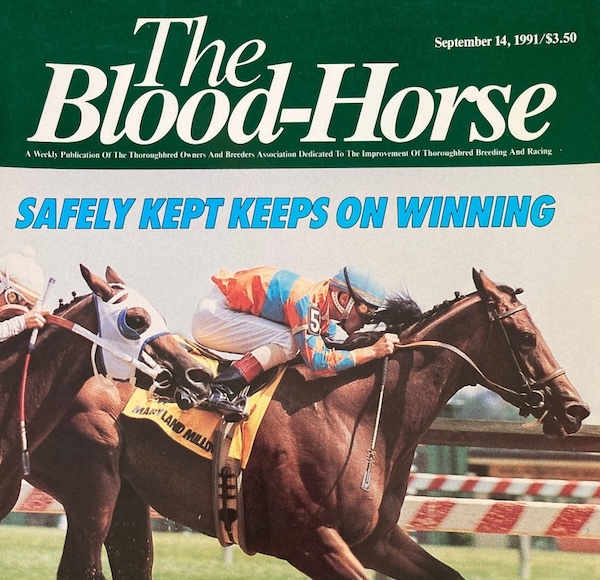 Pure sprinter
Pure sprinter
“She was such a pure sprinter,” said Weisbord, the founder of Matchmaker Breeders Exchange and the Thoroughbred Daily News. “She’d beat the gate and have two lengths on them before they went four jumps. When you think about her size, to accelerate that fast with that body, it would be like LeBron James beating sprinters out of the box.”
Safely Kept was a dark bay mare, but not so dark that her long, black tail did not stand out in luxuriant contrast. She sported a dab of white between the eyes, but otherwise nothing in the way of chrome. Groom Janet Maloney usually did up her mane and forelock in rubber bands for racing. Back wraps protected her heels, and a ring bit was all her riders needed to point and shoot.
Neither her sire Horatius nor her dam Safely Home hinted at what kind of daughter they would produce. Of the mare’s 10 foals, they mated only once, and Safely Kept is what happened.
Horatius was a son of Proudest Roman, a Never Bend colt who ranked among the fastest US two-year-olds of 1970. He lasted only five races with Woody Stephens, winning four, and went to stud at age three. Horatius was his leading earner, while from the same crop came Caesar’s Wish, winner of the 1978 Mother Goose and seven other stakes for trainer Richard Small.
As a three-year-old of 1978, Horatius – along with the rest of the class – was overshadowed by Affirmed and Alydar, who between them won a dozen major prizes for the division and dominated the classics. Horatius managed to hit the board in a handful of stakes, including a second-place finish in a division of the Lamplighter Handicap on the grass at Monmouth Park. The horse running third that day was named John Henry.
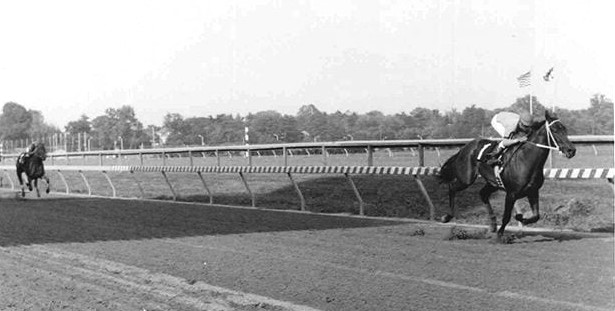 At four, Horatius came into his own with a victory in the G3 Riggs Handicap at Pimlico and three lesser black type wins. He made the last of 54 starts on New Year’s Day of 1981 at Bowie Race Track, then retired to Thornmar Farm on Maryland’s Eastern Shore.
At four, Horatius came into his own with a victory in the G3 Riggs Handicap at Pimlico and three lesser black type wins. He made the last of 54 starts on New Year’s Day of 1981 at Bowie Race Track, then retired to Thornmar Farm on Maryland’s Eastern Shore.
In addition to Safely Kept and her bankroll of nearly $2.2 million, Horatius sired two winners of half-a-million dollars, plus a host of blue-collar Maryland-breds. The stallion’s top-earning colt was Algar, who numbered the 1995 Northern Dancer Stakes at Laurel among his 47 starts. That same year, Olivers Twist won the Federico Tesio Stakes for Horatius and finished second to Timber Country in the Preakness, much to the delight of the Maryland faithful.
Saratoga celebrity
On the female side, Safely Kept traces to Hindoo’s daughter Sallie McClelland, a Saratoga celebrity who won the 1890 Spinaway Stakes and the 1891 Alabama. Her daughter Martha Gorman raced without distinction in England and dropped most of her foals in France.
The direct line proceeded for several generations without making much of a fuss until Arc Lamp, a foal of 1960 who went 0-for-19 on the track, produced the filly Safely Home, in 1973, to the cover of the Bold Ruler stallion Winning Hit.
After laboring through 73 races in West Virginia and the Mid-Atlantic, none of them stakes events, Safely Home was claimed for $11,500 by David and JoAnn Hayden, proprietors of Maryland’s Dark Hollow Farm. As a broodmare, she thrived. Her first foal, Safe On Second, won 31 of 113 starts from 1984 to 1992. Her second foal, Safe at the Plate, hit the board in seven minor stakes events. Her third foal was Safely Kept.
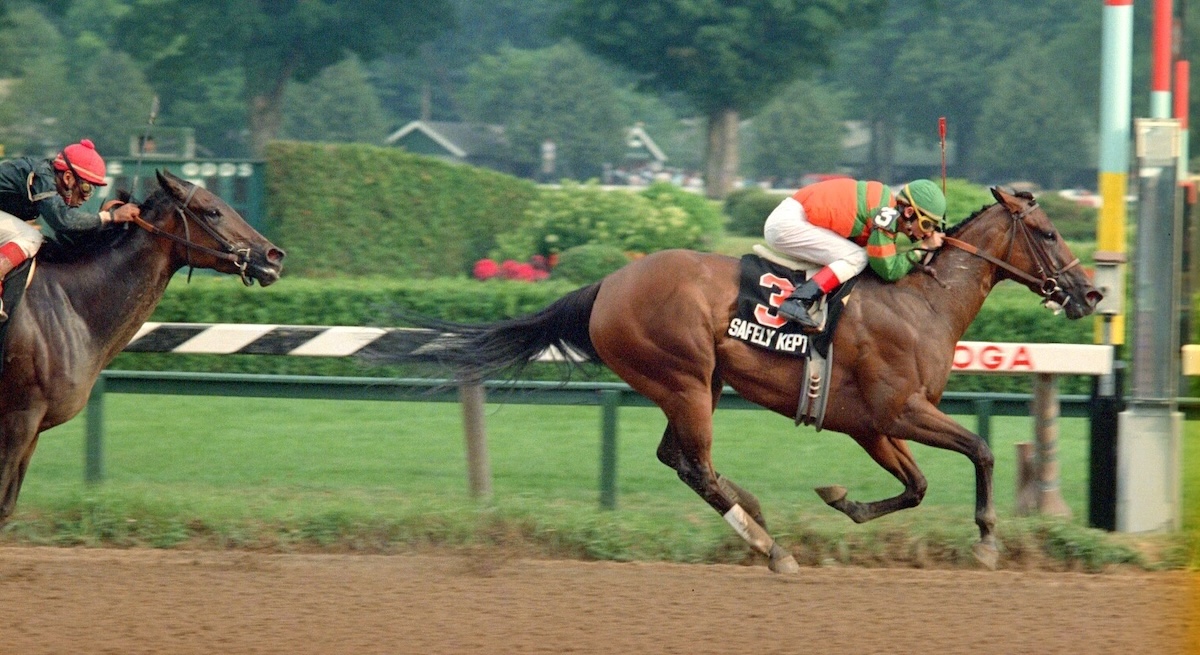 Born on April 7, 1986, Safely Kept was ready to roll as a two-year-old in June 1988. She won the Playpen Stakes by 7½ lengths at Pimlico in her third start for trainer Carlos Garcia and the Haydens, whose advertising business had Weisbord’s Matchmaker account. Informed that the filly was for sale, Weisbord told Goldberg to head for Maryland and have a look.
Born on April 7, 1986, Safely Kept was ready to roll as a two-year-old in June 1988. She won the Playpen Stakes by 7½ lengths at Pimlico in her third start for trainer Carlos Garcia and the Haydens, whose advertising business had Weisbord’s Matchmaker account. Informed that the filly was for sale, Weisbord told Goldberg to head for Maryland and have a look.
“She’s really big,” the trainer reported. “And gorgeous. Let’s get her if you can.”
Weisbord did, with partners Richard Santulli and Dick Wynn, for $300,000, top dollar in 1988 for a two-year-old Maryland-bred filly who had done nothing but sprint. Weisbord and Santulli later bought Wynn’s share to become 50-50 partners.
“She was 17 hands, pretty sound, but when we got her she had a pretty big splint,” Goldberg said. “I stopped on her and blistered her, might have even fired her, and took her to Hialeah. We’d bought a filly from Gary Jones in California, named Mausie, a graded stakes filly training really well. We worked them together, breezed them five-eighths, and Safely Kept just jerked her. I thought, ‘My god, what do I have here now?’”
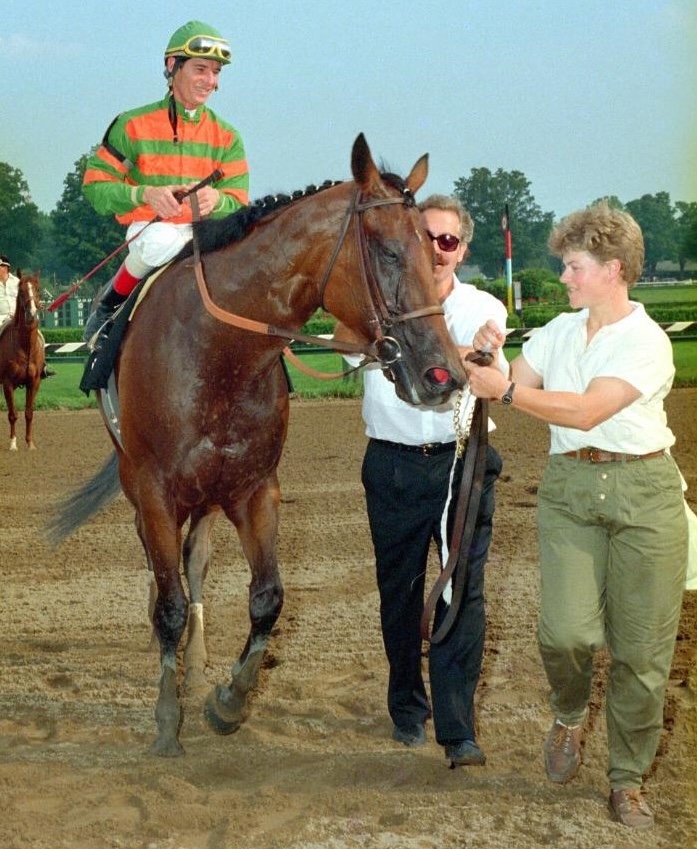 Weisbord remembers the call. He’d known Goldberg long enough to take seriously the rare superlatives, and Goldberg told him: “She might be a freak.”
Weisbord remembers the call. He’d known Goldberg long enough to take seriously the rare superlatives, and Goldberg told him: “She might be a freak.”
“She was big and fast, and the only thing I didn’t know at that point was how much will she had,” Goldberg said. “It turned out she had a lot of that as well. She didn’t want to get beat.”
No stranger to quality
Even though the bulk of his stable had been populated by successful claimers earlier in his career, Goldberg was no stranger to quality horse flesh.
He had come up under Walter Kelley, a New York mainstay, and had already handled the stakes runners Tri For Size and Mazatleca. In 1988, Goldberg had enjoyed his best season yet, with earnings of nearly $1m led by the Irish mare Just Class, a winner that season of three graded stakes.
By the following May, Safely Kept was humbling older fillies and mares in races like the Genuine Risk Stakes at Belmont and the Regret Stakes at Monmouth Park. She aced Belmont’s historic Prioress Stakes, geared down by nearly four lengths, which set her up for the prestigious Test Stakes at Saratoga, the G1 race anyone with a good filly wants to win.
“The race was seven-eighths, and she’d lost going that far the year before, so that was always on our minds,” Weisbord said. “But Saratoga was such a special place for us. Al and I had been there with Mr Kelley. Racing in New Jersey, we didn’t have the opportunity to run there very much. You had to have the bullets.”
For the Test, Angel Cordero had to choose between Safely Kept and Fantastic Find, owned by the Phipps family and trained by Shug McGaughey. Cordero went with Fantastic Find and finished second, beaten a length and a half. Craig Perret landed on victorious Safely Kept, the beginning of a beautiful friendship.
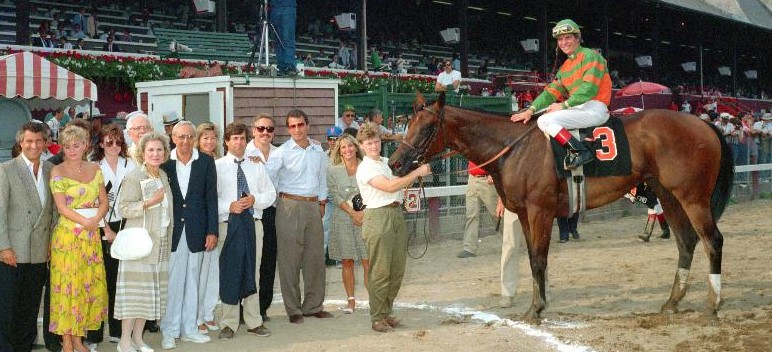 Over a career of 31 races, though, even the best horses will encounter a variety of riders. Safely Kept was no different, although Perret, a future Hall of Famer, was aboard for 13 of those races and lost only twice. Gary Stevens, Kent Desormeaux, Chris Antley, and Cordero all included Safely Kept on their Hall of Fame résumés, as did Julie Krone, who rode the filly to back-to-back victories in September 1990, taking down the Maryland Distaff Handicap at Pimlico and the Budweiser Breeders’ Cup Handicap at Meadowlands.
Over a career of 31 races, though, even the best horses will encounter a variety of riders. Safely Kept was no different, although Perret, a future Hall of Famer, was aboard for 13 of those races and lost only twice. Gary Stevens, Kent Desormeaux, Chris Antley, and Cordero all included Safely Kept on their Hall of Fame résumés, as did Julie Krone, who rode the filly to back-to-back victories in September 1990, taking down the Maryland Distaff Handicap at Pimlico and the Budweiser Breeders’ Cup Handicap at Meadowlands.
“She was gigantic,” said Krone, “and not just that she was tall. The muscle collected all over her body was just mind-boggling. When the starting gate guys loaded her, the assistant starter had to lift his leg because there was no room for him to stand at her shoulder.
Break like a rocket
“She was on the back doors already, so she would push off the back of the gate and break like a rocket,” Krone continued. “After that, she was really tactical. You could put your hands in a certain spot and she would have a cruising gear. But you did have to sit still, because she would be too responsive, almost guilty of offering too much.”
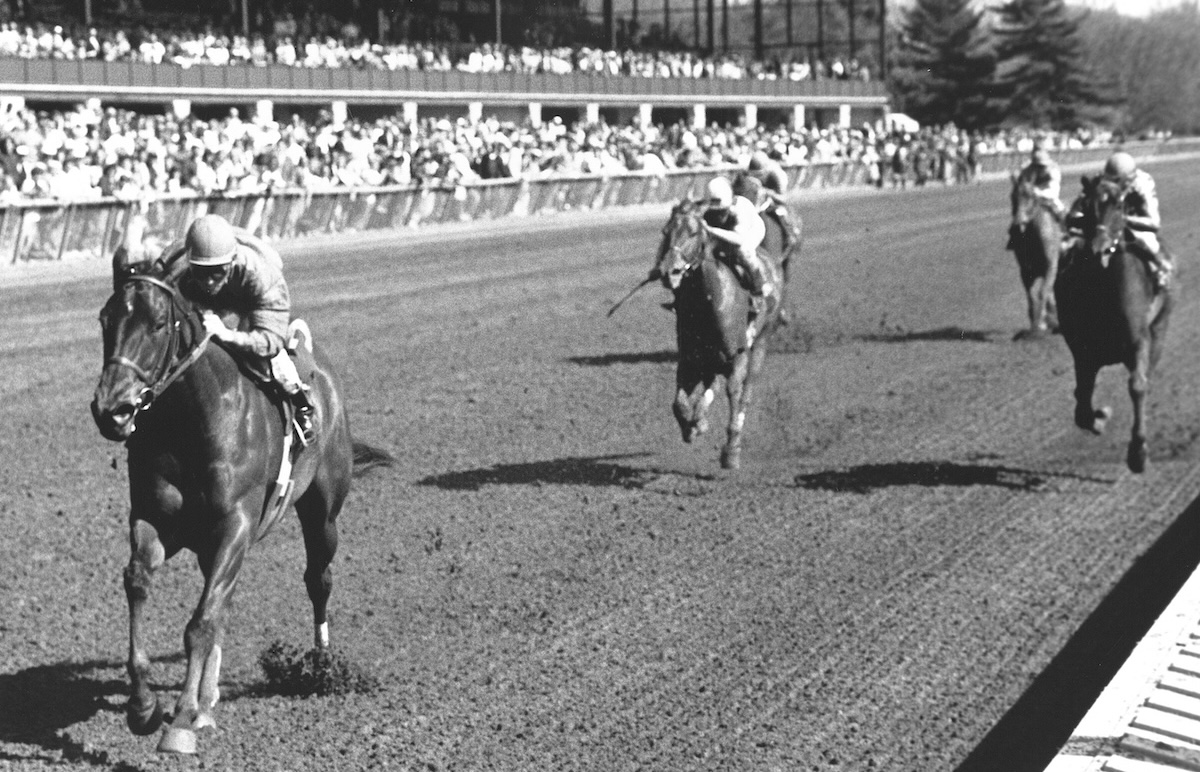 With Krone tacking 98 pounds, Safely Kept was lugging close to 30 pounds of dead weight in those races. “Between as wide as she was and all that lead, I was shifting around a lot while trying to stay as still as possible,” Krone said. “I remember working her often for Alan. She was a joy to ride.”
With Krone tacking 98 pounds, Safely Kept was lugging close to 30 pounds of dead weight in those races. “Between as wide as she was and all that lead, I was shifting around a lot while trying to stay as still as possible,” Krone said. “I remember working her often for Alan. She was a joy to ride.”
Next came the Boojum Handicap against males at Belmont Park. Perret was back aboard Safely Kept in a well-meaning experiment to rate her off the pace; she answered by finishing fourth, and the idea was scrapped. It would be back to what she did best for the 1990 running of the Breeders’ Cup Sprint at Belmont Park.
“And this time God delivered us the break,” Weisbord said, harkening to the last-second loss the year before.
On a Breeders’ Cup day scarred by the death of Go For Wand in the Distaff, the Sprint set the chaotic tone at the top of the program. During the early part of the running, Mr. Nickerson suffered a fatal cardiac event and collapsed, throwing Chris Antley hard to the ground. Shaker Knit tripped over his fallen rival and sustained an irreparable fracture. His rider Jose Santos escaped relatively unharmed, but Antley broke a collarbone.
Wickedly fast
Meanwhile, Safely Kept was racing through one of her wickedly fast half-miles, this time with the fabled British sprinter Dayjur in hot pursuit. Although Dayjur, representing the legendary royal trainer Dick Hern, had won a raft of G1 European sprints, he’d never raced on dirt. Still, his pedigree should have quieted doubts, since his sire Danzig could throw any kind of runner, and his dam Gold Beauty was the Safely Kept of her generation.
As havoc reigned behind them, Safely Kept and Dayjur engaged on the turn and fought side-by-side through the stretch until it appeared as if the colt was edging clear. The came one of the most notorious moments in Breeders’ Cup history – at least as far as European visitors are concerned.
As the undeniably brilliant Dayjur just nosed ahead well inside the final sixteenth, the shadow from the cupola perched atop the grandstand fell across the sunlit track. Dayjur jumped into the dark void, allowing Safely Kept to regain the initiative, then he jumped again at another shadow near the finish. Her winning margin was a neck.
Although the storyline painted Safely Kept as the lucky winner, Goldberg, flush with victory, saw it his way, while a frustrated Willie Carson offered the Dayjur point of view.
“I think I was the only one who said she would have won, but I was just talking,” said Goldberg. “We didn’t get the money,” Carson countered. “But we’ve got the best horse.”
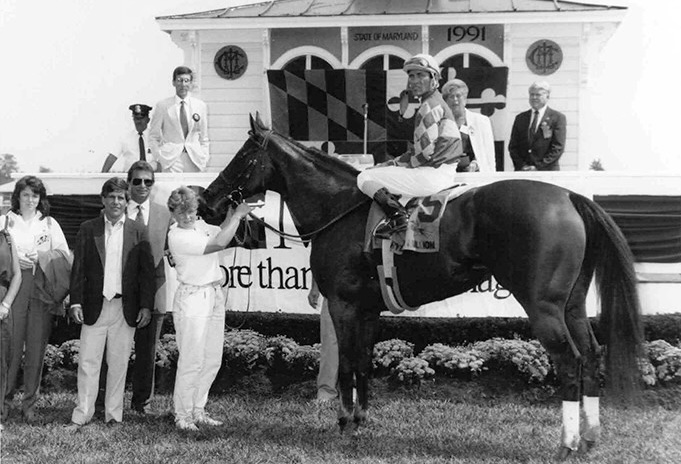 By the end of her four-year-old campaign, racing secretaries had descended upon Safely Kept in an effort to level the playing field. She won under 125, 126, and 127 in handicaps, often giving away upwards of 10 pounds to opponents.
By the end of her four-year-old campaign, racing secretaries had descended upon Safely Kept in an effort to level the playing field. She won under 125, 126, and 127 in handicaps, often giving away upwards of 10 pounds to opponents.
“She was just better than all the fillies, and most of the colts,” Goldberg said.
After turning five, Safely Kept started off winning under 128 pounds, raced at seven different tracks, and ended her career with back-to-back victories carrying 130 and 128. The finale came on Oct. 4, 1991, at the Meadowlands, one month before she would have defended her title in the Breeders’ Cup Sprint, to be run at Churchill Downs. It wasn’t meant to be.
“She had a little suspensory coming that last year, so that was that,” Goldberg said.
Rejuvenation of the female line
As a broodmare, producing foals for Santulli’s Jayeff B Stable, Safely Kept carried on the rejuvenation of the female line sparked by her dam. Her son Peace Chant was fast enough to win the Phoenix Gold Cup, reducing six furlongs to 1:08.20, just like mom did on several occasions. Three daughters produced stakes runners, among them Welcome Home, who in turn kept the family rolling through her son Pool Winner, trained by Goldberg to bank more than $400,000.
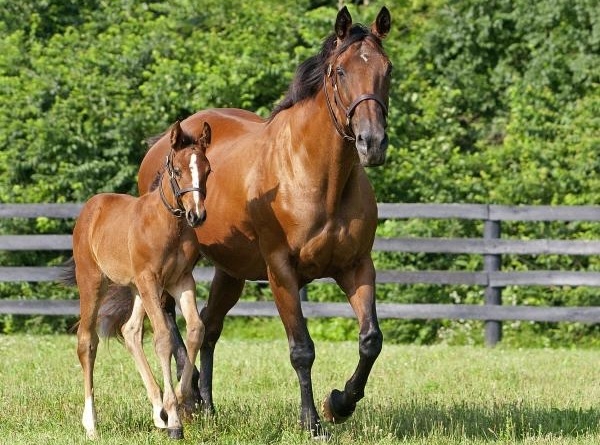 Safely Kept produced her last foal in 2010. The following year she was elected to the Hall of Fame in Saratoga Springs as part of an all-female contemporary class that included Open Mind and Sky Beauty, who did their best work over a route of ground. In contrast, Safely Kept was that rare sprinting filly elevated to the pantheon, joining only a handful of past greats that included Pan Zareta, Affectionately, and Ta Wee.
Safely Kept produced her last foal in 2010. The following year she was elected to the Hall of Fame in Saratoga Springs as part of an all-female contemporary class that included Open Mind and Sky Beauty, who did their best work over a route of ground. In contrast, Safely Kept was that rare sprinting filly elevated to the pantheon, joining only a handful of past greats that included Pan Zareta, Affectionately, and Ta Wee.
After Safely Kept left the fold, Goldberg went on to train a slew of stakes winners, including Belmont Derby winner Force The Pass, Diana Handicap winner Laughing, and E.P. Taylor Stakes winner Tannery. He went out with a flourish, sending forth his last horse as a public trainer to win the 2018 Queens County Handicap at Aqueduct.
Horatius was 31 when died at home at Thornmar in February of 2006. Safely Kept, his most famous offspring, made it to 28 and died on April 22, 2014, where she had served so long and well at Burleson Farms near Midway, Kentucky. Her remains are buried there by a stream.
“Her athleticism was so rare, in an animal of that physique,” Weisbord said. “There have been great sprinters that big, but not that quick.
“But beyond that is what she meant to all of us,” he added. “I don’t think there’s better example of a horse who truly changed the trajectory of the lives of the people around her.”
• Read all Jay Hovdey's features in his Favorite Racehorses series
Alphabet Soup: ‘Honest to a fault – when he was right, he ran his heart out, win or lose’
View the latest TRC Global Rankings for horses / jockeys / trainers / sires


